In 1999, when Todd Leopold and his elder brother, Scott, decided to launch a sustainable distillery, anyone interested in starting a “green” business was categorically labeled a “hippie.” Yet the namesake Leopold Brothers had more than an idyllic dalliance with the idea of manufacturing spirits in a sustainable manner. Todd had spent the last two years studying brewing in Germany, while Scott pursued a degree in environmental engineering at Stanford. Needless to say, when banks scoffed at the eco-friendly section of their business plan, the pair was somewhat taken aback. “We ended up having to eliminate those details because the banks dismissed us outright. They didn’t realize it makes business sense to use less water or recyclable packaging,” Todd laughs.
Twenty years later, the mainstream is finally catching on. “When you see people just starting to realize the problem of plastic straws, it makes sense that our ideas would have caught people off-guard,” Todd says. “We actually had to downplay the sustainability angle because customers assumed our product was inherently handicapped or that it couldn’t stand up to other bottles on the market. But the secret is—whether it’s straws, coasters, or a more wasteful form of manufacturing—people don’t notice things being gone if you never had them to begin with.”
Even without the added ambition of sustainability, launching a small American distillery in 1999 was already a novel business plan. While craft distilling had deep roots in the United States from the mid-1600s through 1920, a mere thirteen years of Prohibition effectively crippled the industry, erasing countless traditions and methodologies that were never passed down. Todd reflects, “Our country had a giant hiccup no one else had, and the result was that independent distilleries—which were inherently linked to agriculture—never recovered. When American distilling returned, it became an industrial process, sacrificing quality for efficiency.”
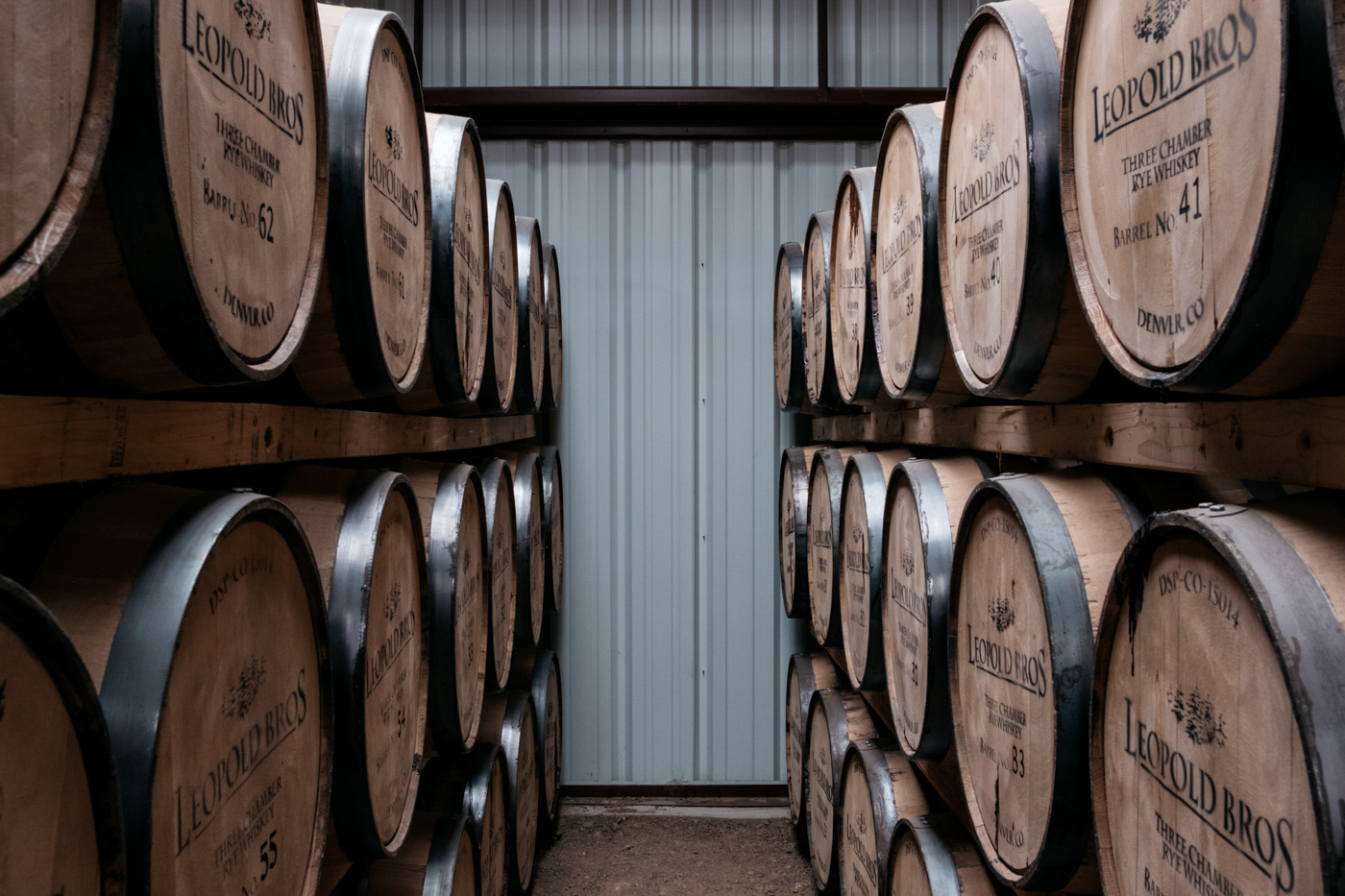
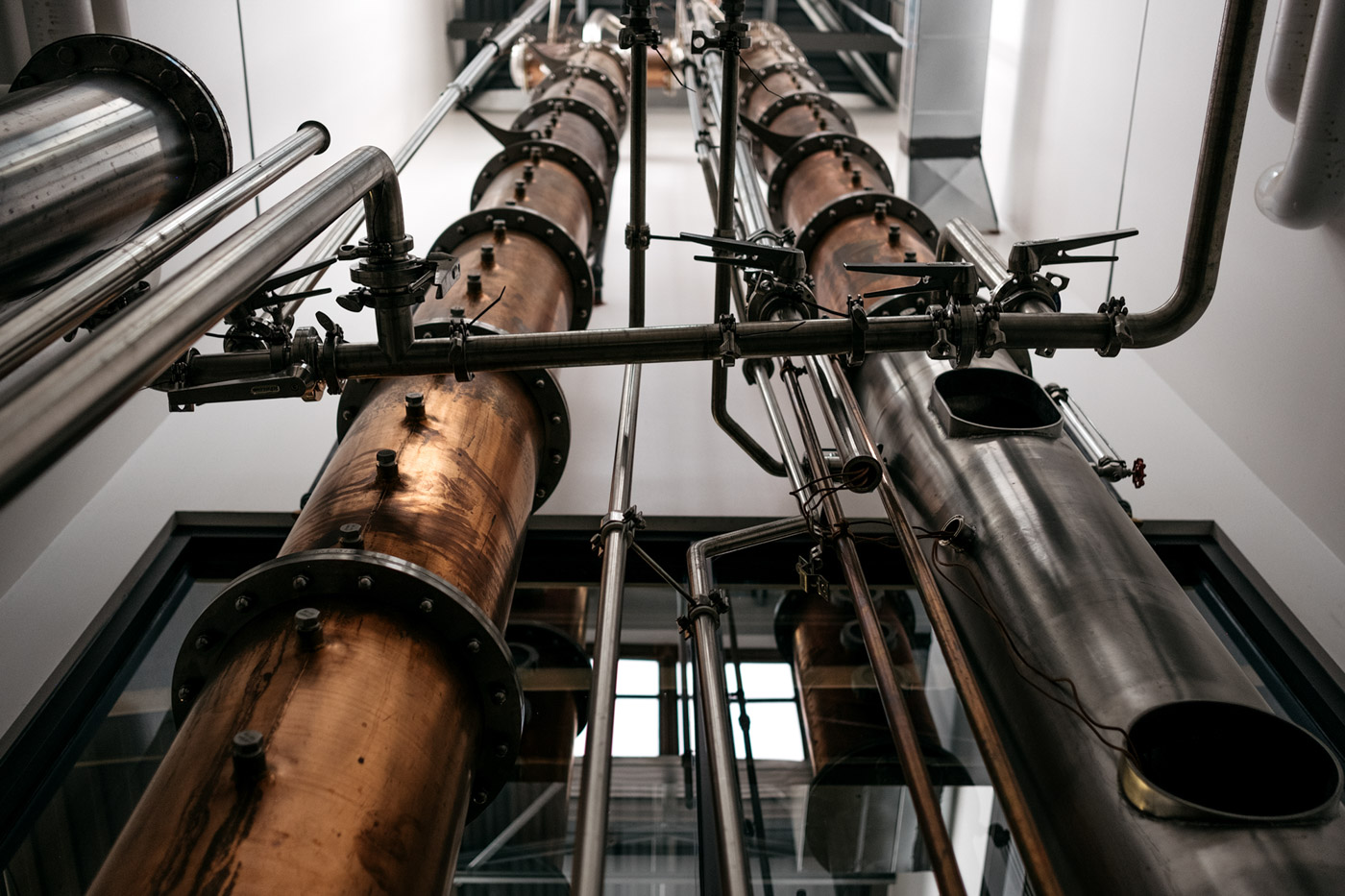
What exactly does that “industrial” methodology mean in terms of process? According to Todd, American scotch and bourbon were originally distilled from a five-percent ABV beer, but in the past ninety years, American distillers have tended toward a nine- to ten-percent ABV beer as the input. That higher alcohol brew stresses out yeasts and results in unpleasant esters that “smell like nail polish.” With his training in Germany—a country where more than 1,500 breweries process the historic surplus of thousands of farms—Leopold was willing to take a more traditional approach.
“We’re not in love with being old-timey just for the sake of it,” Todd clarifies. “But fermenting at five percent greatly improves the quality of the distillate. We also make some less traditional choices, like fermenting our stills with all the original grains still in the mix—which makes us twenty percent more efficient than any of the Scottish or Irish distilleries [who perform a lautering step of removing that grain]. It’s all about making the best product, while thinking through how we can prevent the byproduct from hitting the waste stream.”
Onsite at the factory, that thoughtfulness is apparent in every step of the process. In the malting room, the entire space is disinfected not with commercially manufactured cleaner, but with the “heads” of Leopold’s own grain alcohol—an inedible, powerful first cut of the distillate. Next door in the barrel house, there are no overhead electric lights, heating or cooling. And in the onsite tasting room, reclaimed wood and salvaged ship lights help create the cozy, rustic ambiance.
In the distillery itself, visitors can’t ignore the presence of multiple copper stills, predominantly crafted by renowned Kentucky manufacturers Vendome Copper and Brass Works. From rudimentary pot stills to towering multi-chamber copper columns, each still represents a different style or era in distilling, including a three-chamber copper column used for extracting particularly chewy, oily rye whiskeys. Based on drawings the brothers discovered at a historical society in rural Illinois, the three-chamber design harkens to the abandoned heyday of pre-Prohibition distilling. “When cocktail writer David Wondrich heard we were building that still, he immediately booked a plane ticket,” Director of Sales Taryn Kapronica laughs. “No other distillery in the world is currently using this kind of still to make a traditional rye.”
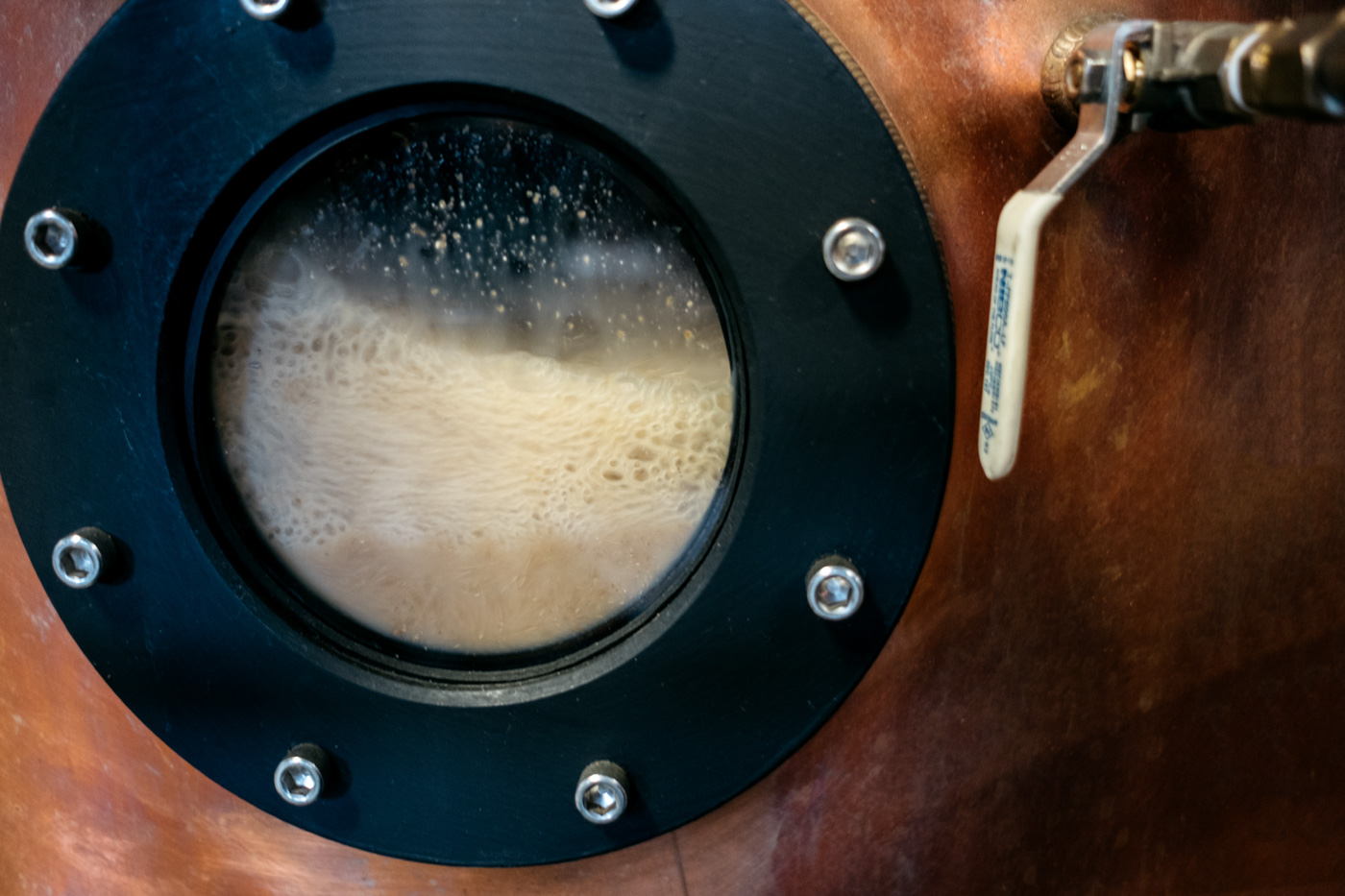
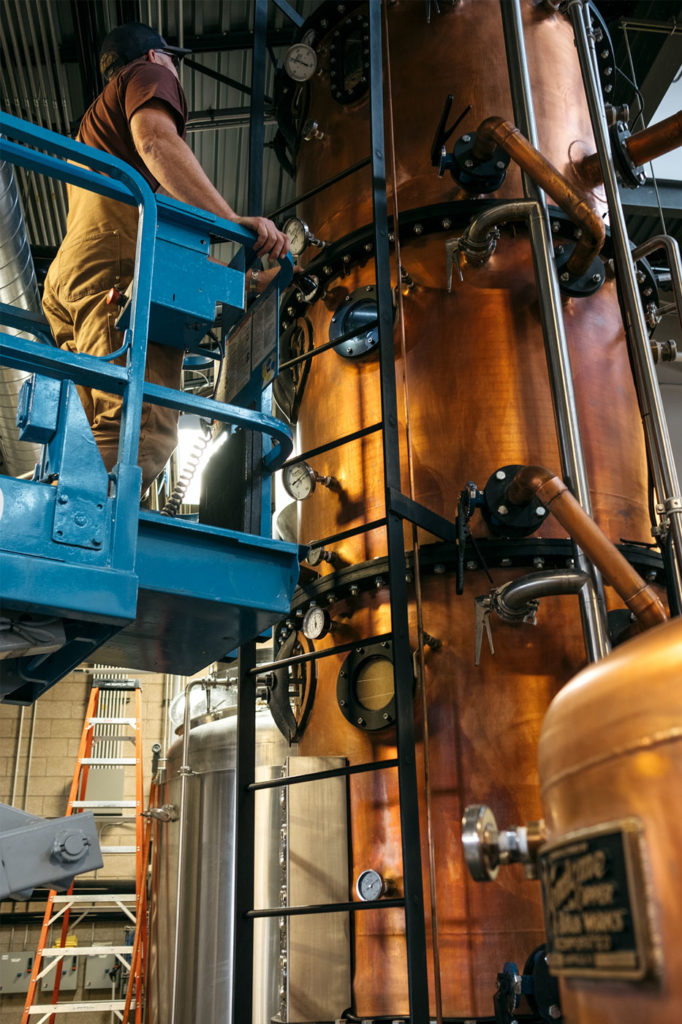
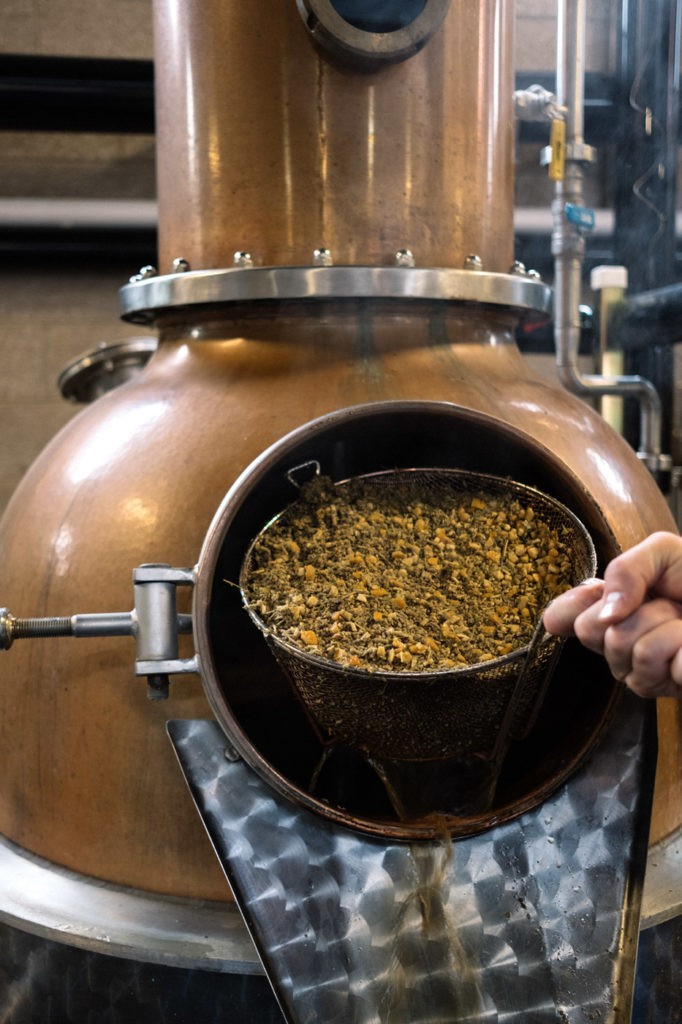
Equally eye-catching on the distilling floor are bubbling vats of toasted umber liquid. These freestanding open fermenters were built by a heritage manufacturer of hot tubs based in Philadelphia and are used for capturing the distinct bacteria and wild yeasts of Leopold’s local climate. On warm days, the team rolls up massive garage-style doors and turns on their “Big Ass Fan” (the actual brand name), inviting a robust onsite wildflower garden to influence the flor of the fermenters. “Our process is all about creating a comfortable space for yeast to thrive and devour sugars, as open-air fermentation helps develop acetic acid—which oxidizes during maturation into a range of fruit aromas,” Todd explains. “We are also known for our long-lasting finishes, and it all starts with encouraging a diverse microbial climate.”
Yet Colorado’s high mountain desert far from resembles the historic whiskey climates you find in the damp, chilly United Kingdom. “For malting, you ideally want to keep about fifty percent humidity and a temperature of fifty to fifty-five degrees Fahrenheit—something very different from our dry, high-altitude environment,” Kapronica explains. “But Scott Leopold has engineered our system to be incredibly energy-efficient, and we have the stats to that back that up. For example, conventional distilleries will go through about six to twelve times the volume of a 750-milliliter spirit bottle to create the product you see on the shelf. Our water waste is just over two-to-one per bottle, and we foresee reducing that further in years to come.”
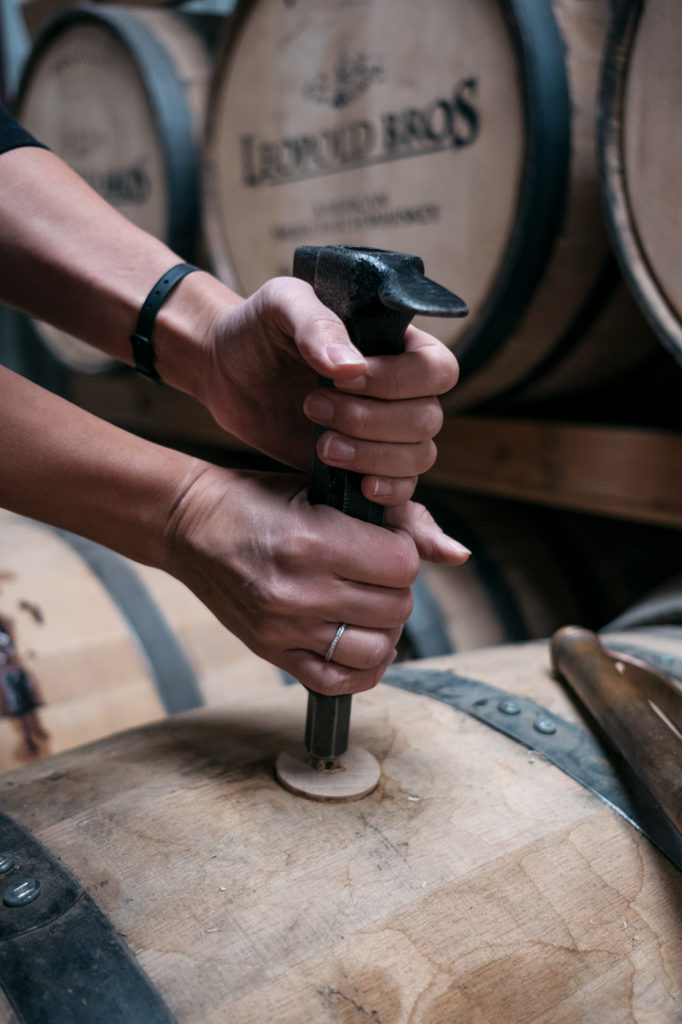
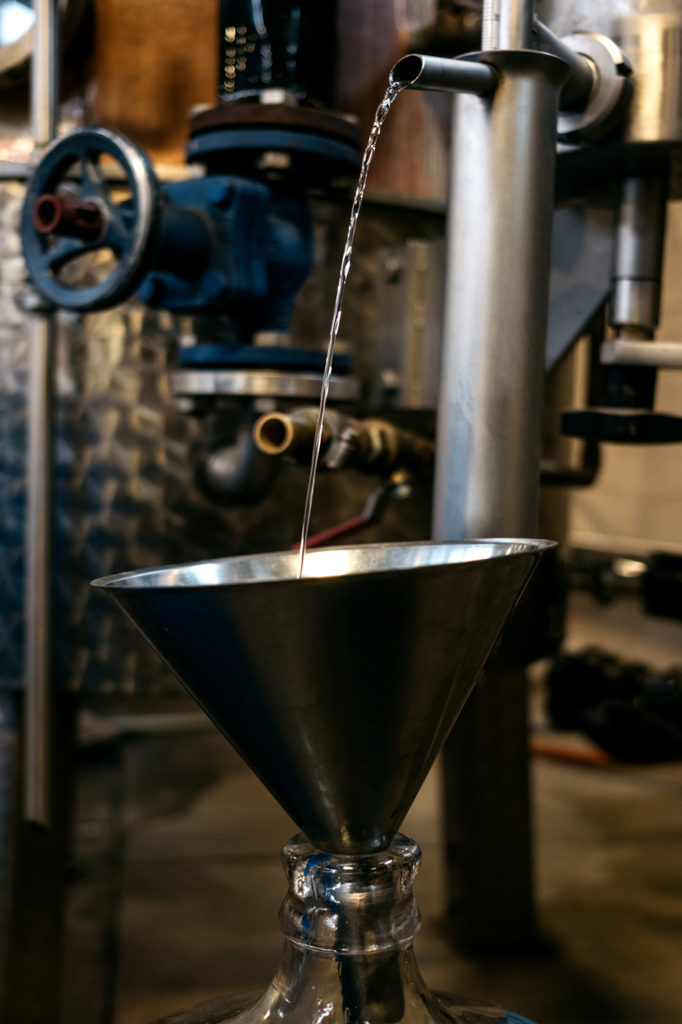
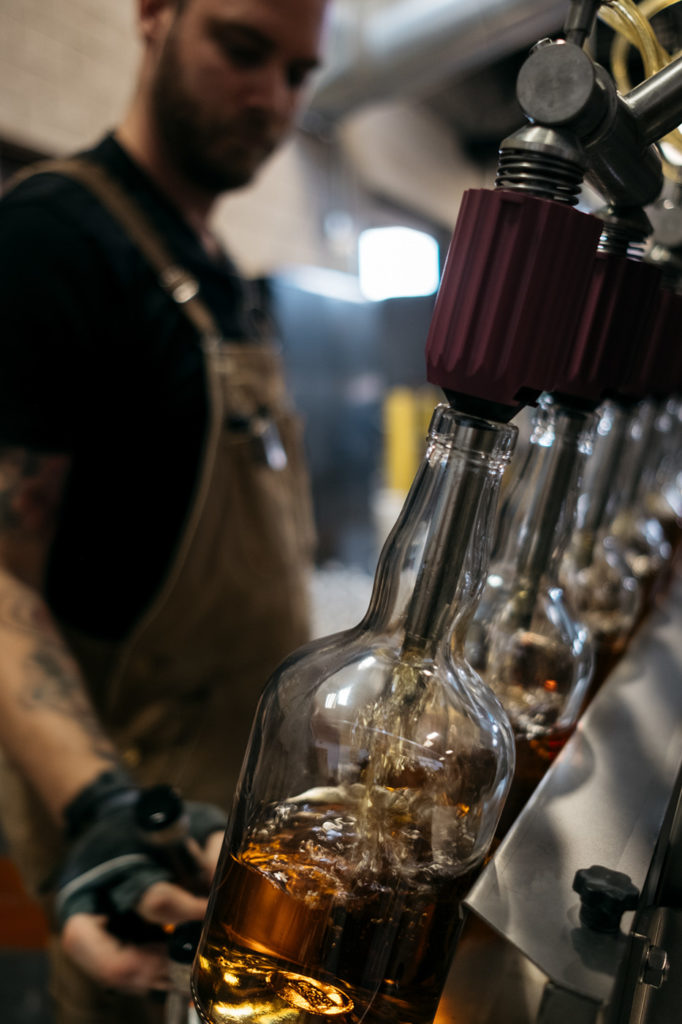
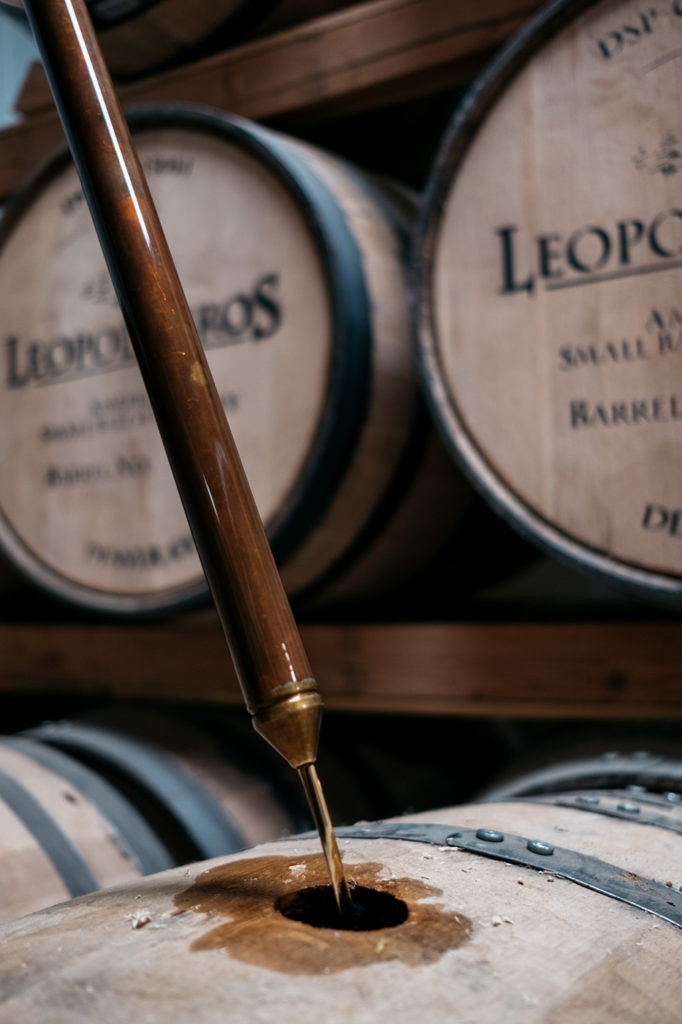

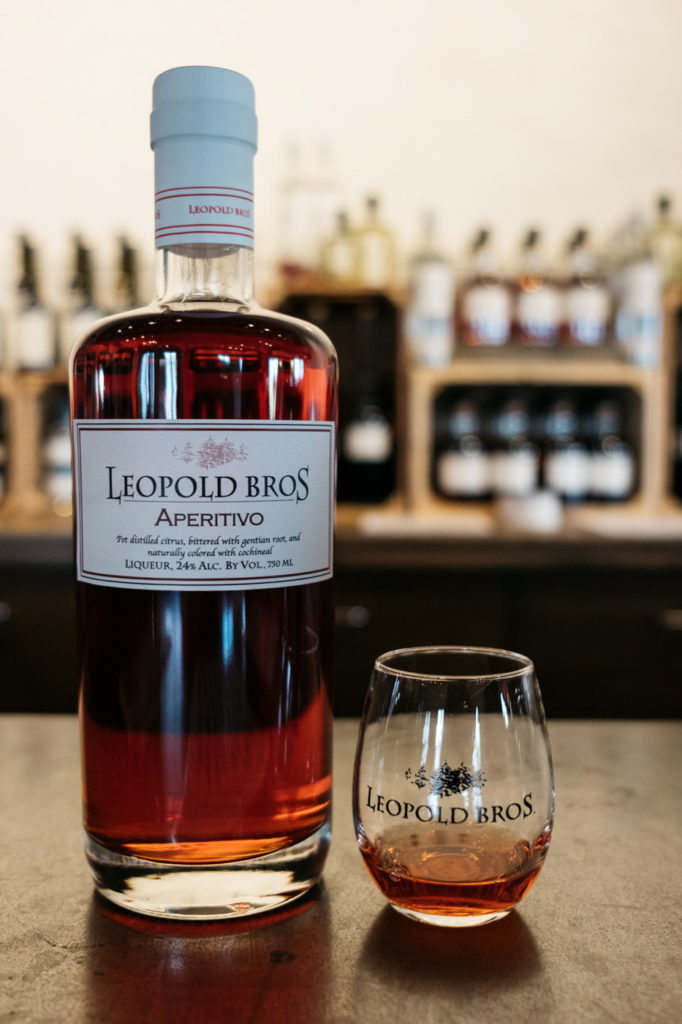
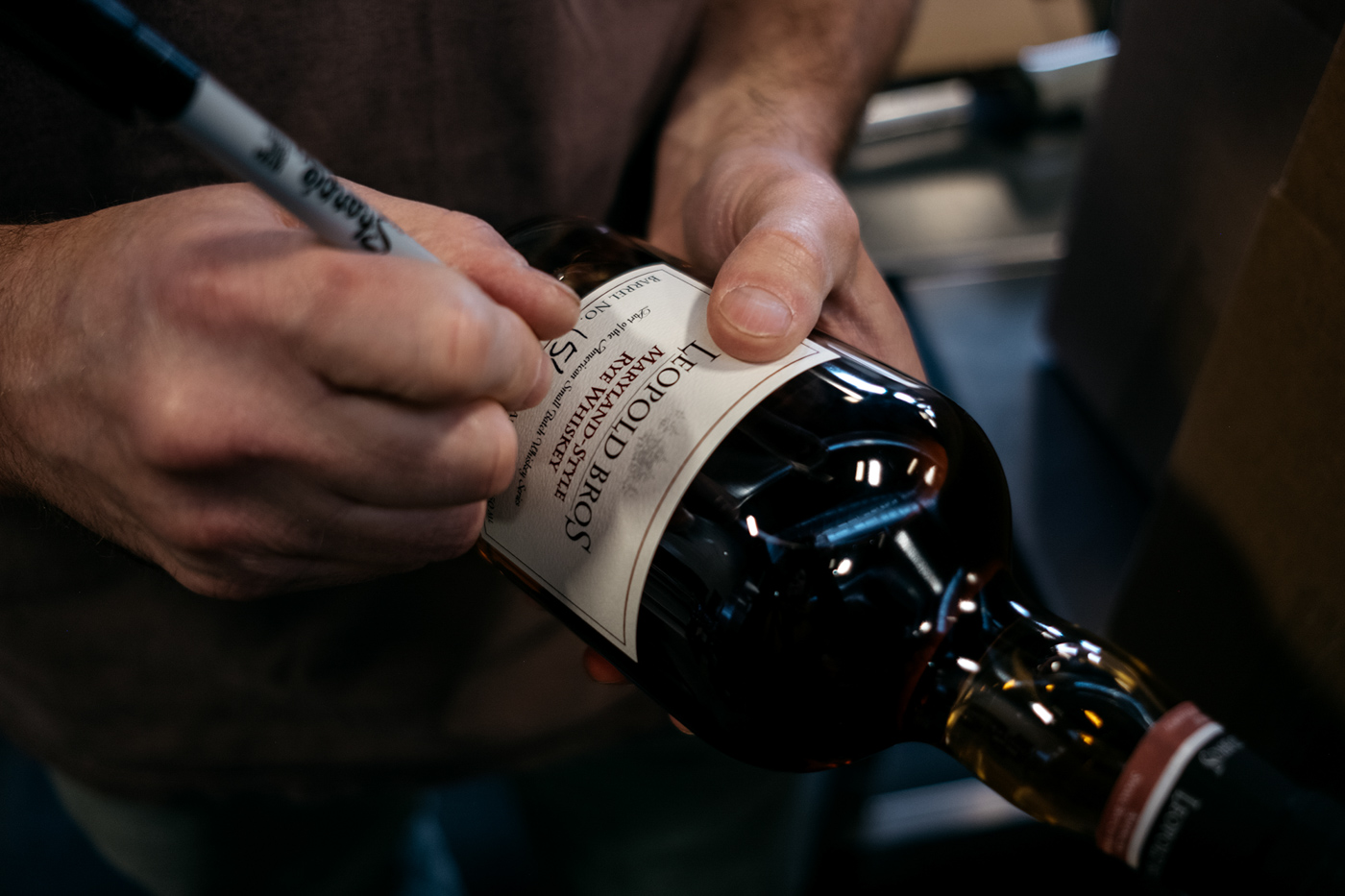
Another sign of remarkable efficiency you’ll see at Leopold? The wealth of products on offer. Beyond their popular bourbons and rye whiskeys, the distillery currently offers three distinct gins, an amaro, a fernet, and a number of fruit liqueurs. “We have about two dozen products in the market,” Kapronica notes. “And that’s just what we can ensure will be high-quality and shelf stable at scale. Todd has actually created more than eighty products—including this strawberry liqueur I can’t stop thinking about—but we only bottle what makes sense for the market.”
The question of what makes sense for the market is arguably a subjective one, as the spirits industry remains wildly unregulated in terms of what actually ends up in the bottle. “Distilleries are actually reviewed by the TTB—the Alcohol, Tax and Trade Bureau—which is completely separate from the FDA,” Kapronica explains. “We don’t have to list what goes in the bottle, which allows companies—large and small—to add all kinds of chemicals to liquor.” Examples include dyes, like those that give amaros and fruit liqueurs their brilliant hues. At Leopold Bros., the bright red aperitivo is dyed with ethically harvested cochineal beetles from Peru, collected for that purpose only after their natural death. For vegans, that decision might still appear unpalatable, but for the distillery, the choice feels more ethical than using modern chemical alternatives.
“We made sustainability a focus ahead of the curve,” Todd reflects. “And it takes people a long time to understand what you’re doing. But we’re not interested in a ten- or twenty-year business plan. We think about what our business will be in one hundred years. We’re winning people over one customer at a time. But I find it so much more rewarding to see that light bulb come on—to see people in our tasting room get quiet and realize, ‘That’s a world class spirit.’”

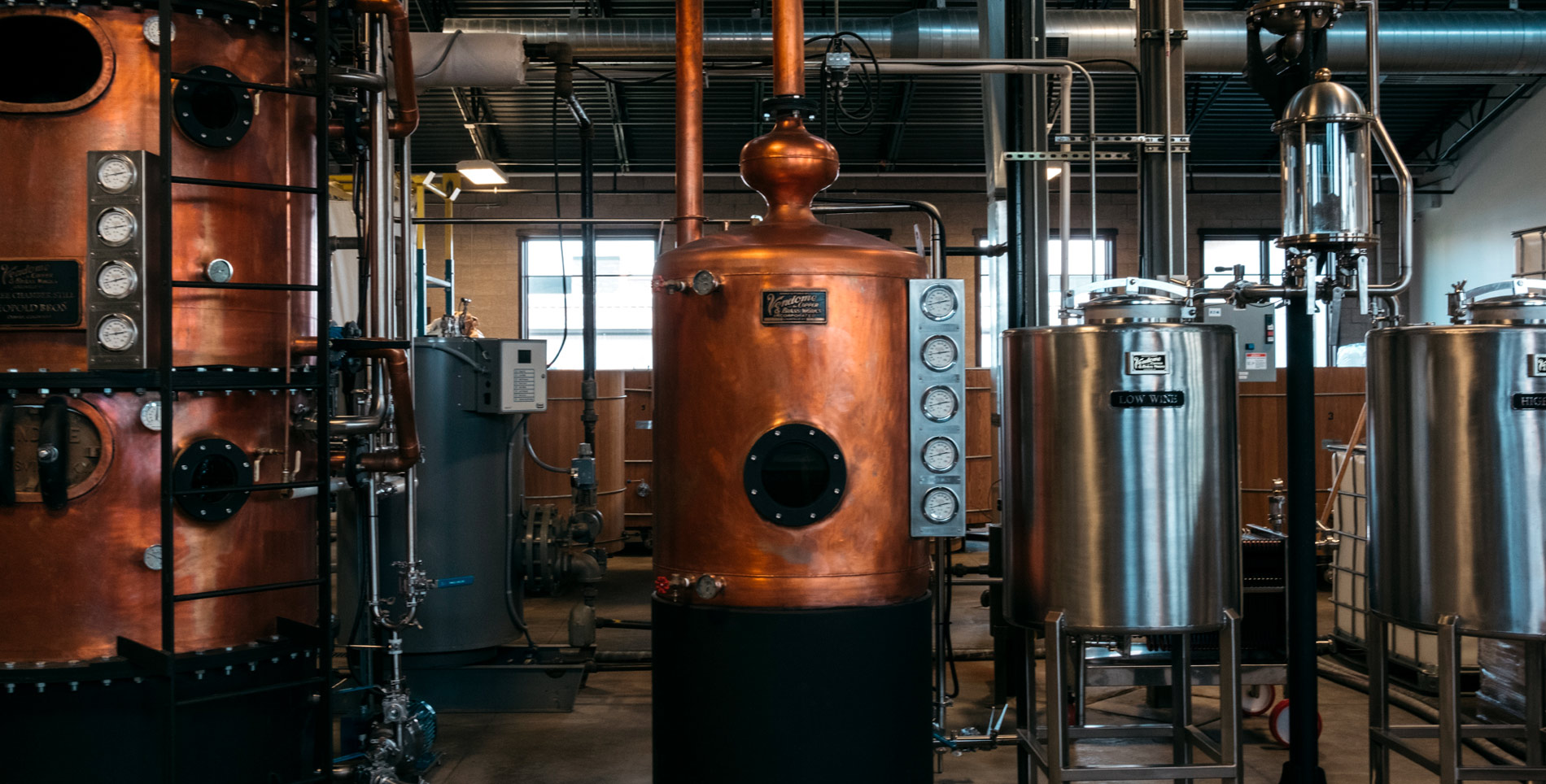

Our comments section is for members only.
Join today to gain exclusive access.